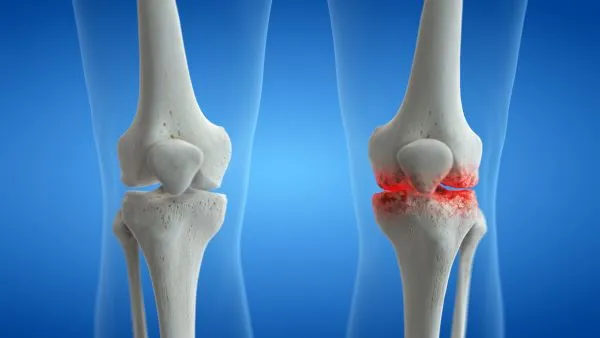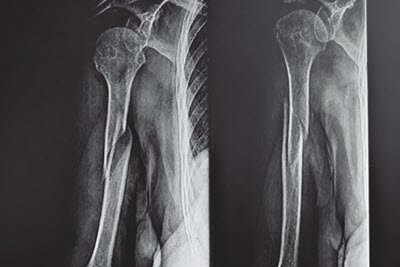Nail Down Knee Osteoarthritis Codes
Learn the difference between primary and secondary OA. As a radiology coder, you may receive a report where the radiologist finds the patient is experiencing osteoarthritis (OA) of the knees. However, you’ll need more information from the documentation to assign the correct OA diagnosis code. That’s why Radiology Coding Alert gathered this helpful advice for selecting the appropriate knee OA ICD-10-CM code each time. Understand the Types of Knee Osteoarthritis OA is a type of arthritis that occurs when the joint cartilage breaks down gradually, which causes the bones to rub together. Patients suffering from OA may experience joint stiffness, pain, and loss of joint movement. Even though OA and arthritis are different terms, “in the U.S., arthritis is also referred to as ‘osteoarthritis,’ and the terms are used interchangeably,” says Melanie Witt, RN, CPC, MA, an independent coding expert based in Guadalupita, New Mexico. In fact, according to AHA Coding Clinic® for ICD-10, Volume 3, Issue 4, “the default for ‘arthritis, unspecified’ is ‘osteoarthritis, unspecified site,’” and why M19.90 (Unspecified osteoarthritis, unspecified site) identifies “Arthritis” in the ICD-10-CM Alphabetic Index. As a result, you would report M19.90 “any time the physician simply indicates the patient has arthritis,” according to Witt. The ICD-10-CM code set breaks down knee OA into three types. Understanding how each one of them presents will help you select the correct OA codes: Primary osteoarthritis: This OA type develops over time due to joint degeneration, inflammation, and everyday wear and tear. Secondary osteoarthritis: While primary OA is caused by wear and tear, secondary OA “is caused by a known reason or consequence,” explains Kaitlyn Bohrer, COSC, of Eastside Orthopedics & Sports Medicine in Milwaukie, Oregon. The underlying conditions that can contribute to secondary OA include genetics, inactivity, obesity, and several other diseases. Post-traumatic osteoarthritis: A subtype of secondary OA, post-traumatic OA occurs when the patient suffers a traumatic injury. The condition “is contributory to a particular trauma or injury such as a subsequent fracture to a bone after playing a sport or an injury due to a car accident,” Bohrer says. Locate the Knee OA Code Choices ICD-10-CM places knee OA codes under the M17.- (Osteoarthritis of knee) code subcategory. The codes are separated by OA type and knee laterality. You’ll assign M17.0 (Bilateral primary osteoarthritis of knee) for the provider’s diagnosis of primary OA in both of the patient’s knees. Code M17.1- (Unilateral primary osteoarthritis of knee) requires a 5th character to specify if the primary OA occurs in the patient’s left or right knee or if the physician didn’t specify which knee. If the physician diagnoses the patient with post-traumatic OA in the knees, you’ll look to M17.2 (Bilateral post-traumatic osteoarthritis of knee) or M17.3- (Unilateral post-traumatic osteoarthritis of knee). Once again, you’ll assign 5th characters 0, 1, or 2 to M17.3- depending on the unspecified or specified laterality of the knee. For secondary OA of the knee diagnosis, you’ll look to M17.4 (Other bilateral secondary osteoarthritis of knee) and M17.5 (Other unilateral secondary osteoarthritis of knee) depending on whether the OA affects one or both knees. Lastly, M17.9 (Osteoarthritis of knee, unspecified) is available if the provider assigns an unspecified OA diagnosis of the patient’s knee. Code This OA X-ray Encounter Scenario: A 65-year-old patient presents to their primary care physician (PCP) with complaints of ongoing joint pain in both knees. After performing a physical examination, the patient’s PCP documents that the patient is morbidly obese. The PCP refers the patient to an outpatient radiology practice for knee X-rays. At the radiology practice, a radiologist captures anteroposterior (AP), posteroanterior (PA), and lateral views of the patient’s knees. The radiologist reviews the images and issues their findings of bilateral secondary OA due to the patient’s obesity. Let’s break down the coding selection for the radiologist’s encounter. You’ll start with the procedure code. In the scenario, the radiologist captured AP, PA, and lateral views of both knees, which means you’ll assign 73562 (Radiologic examination, knee; 3 views) to report the procedure. Since 73562’s descriptor mentions one knee, not both knees, you’ll need to append either modifier 50 (Bilateral procedure) or LT (Left side)/RT (Right side) to the code. Of course, double check your individual payer preferences to review how they want bilateral knee X-rays reported. Next, you’ll open your ICD-10-CM code set. You’ll assign M17.4 to report the bilateral secondary OA of the knee diagnosis. The radiologist also documented that the patient’s morbid obesity contributed to the OA in the knees. You’ll turn to Chapter 4: Endocrine, Nutritional and Metabolic Diseases in the code set to locate the correct obesity code. Code E66.01 (Morbid (severe) obesity due to excess calories) is the correct code choice for the patient’s condition. Adding E66.01 paints the whole picture as to why the patient is experiencing secondary OA of the knees.





